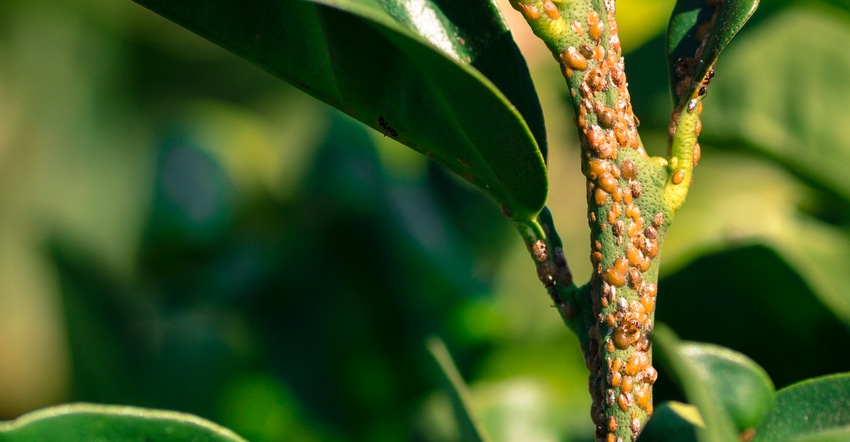
In early August we reported on the discovery of an infected Asian citrus psyllid (ACP) in a commercial California citrus grove east of Riverside. This was the first discovery of what is euphemistically called a "hot psyllid" in a commercial grove, something the citrus industry fears could be the gateway to Huanglongbing (HLB) being confirmed in commercial citrus.
While citrus growers may breathe a sigh of relief after state officials said they found no evidence of HLB in the organic grove after performing tests on leaf samples, an entomologist with the University of California says that does not necessarily mean the absence of the deadly tree disease.
The industry was told this several years ago by a respected researcher. The testing protocols used to declare a citrus tree or psyllid as infected are not perfect and may be the subject of debate as the arbitrary figures used in polymerase chain reaction (PCR) tests to determine infection are just that. Regulations set minimum levels of bacterium that must be present to declare a tree or psyllid diseased. Still, the bacterium exists and, once the bacterium exists, scientists believe it never goes away.
What does this mean? Could there be sufficient Candidatus Liberibacter asiaticus (CLas) bacterium in the environment that is slowly replicating itself enough to cause disease symptoms. Or, could it suggest California citrus is simply better adapted to withstand the bacterium for reasons we do not understand?
"We're just in a weird grey area," said Rivera on the notion that CLas is an automatic death sentence in California citrus. While that is the consensus of the industry, based on what scientists say, she says "I don't think that has been resolved."
Why, for instance, did HLB run rampant through Florida groves, but has yet to be discovered in California groves despite being reported in over 2,000 residential trees across southern California? Are citrus trees in commercial California groves generally healthier because of the way they are managed and therefore better suited to withstand disease? I have heard from more than one citrus industry expert to suggest as much. The reality leaves us with more questions than answers for the state of HLB in commercial citrus.
Should the examples from Florida and elsewhere be used to set policy and practices in California given that HLB has still not made itself obvious in a commercial grove in southern California or the Central Valley? Why has California managed to dodge this bullet while other regions of the world have not? Are California citrus farmers just that good at maintaining healthy trees?
Do we truly know how HLB is transmitted and how it moves through citrus trees? If not, could our current regulatory practices of testing trees for the disease be faulty? Are there better methods for testing for the disease, or do we need more information first on how the disease manifests itself before coming up with new testing protocols?
About the Author(s)
You May Also Like






